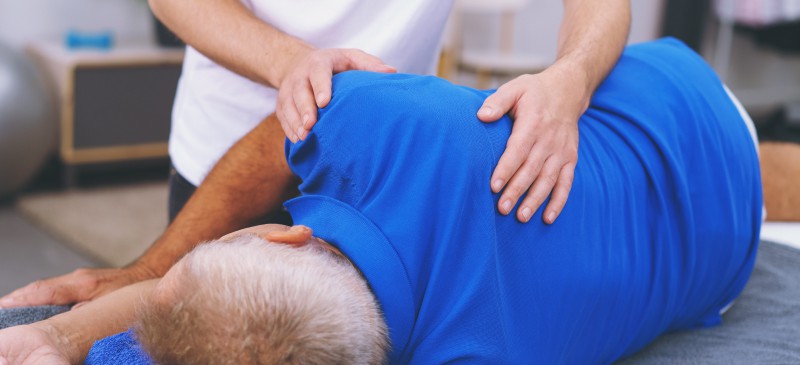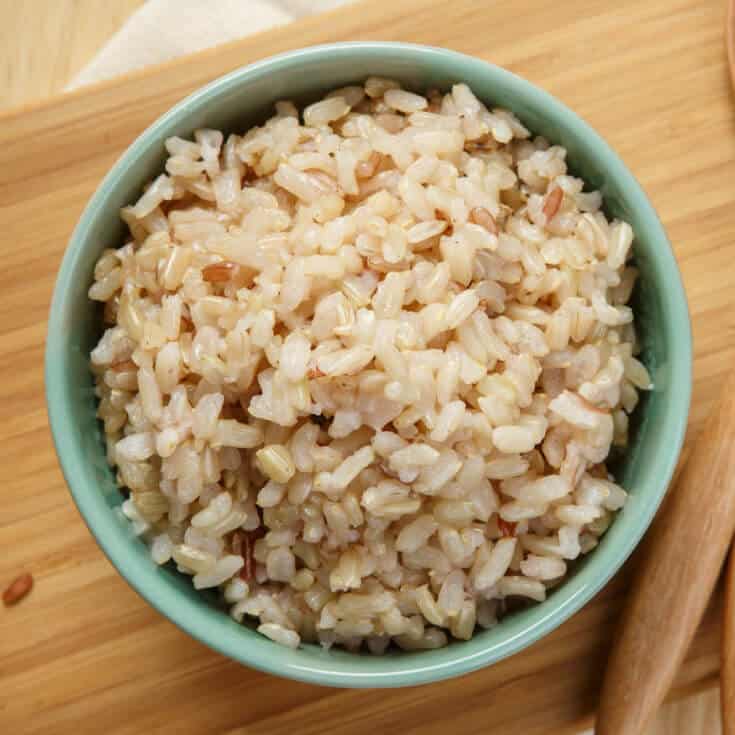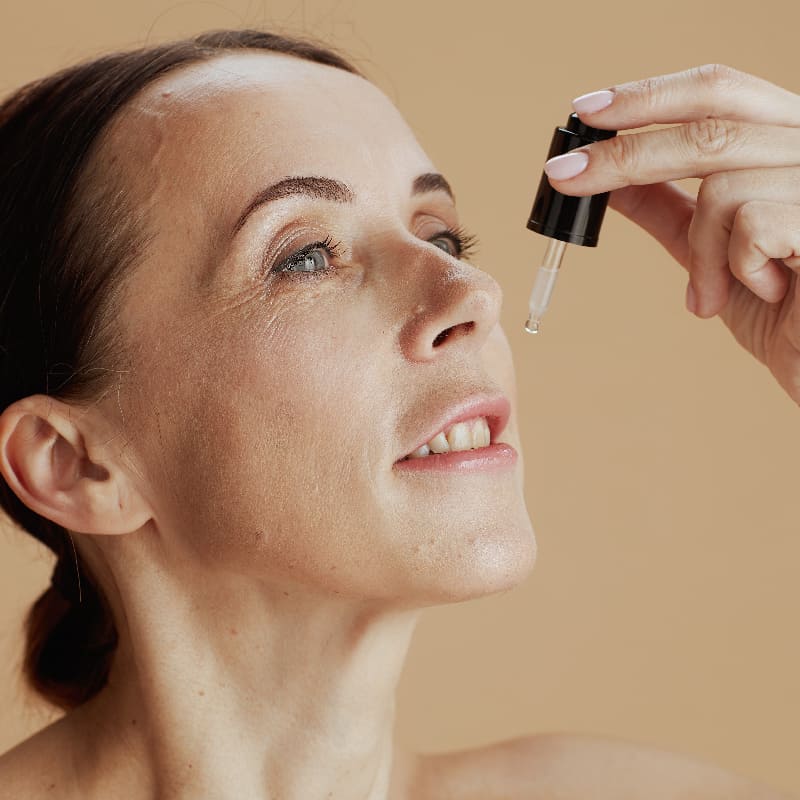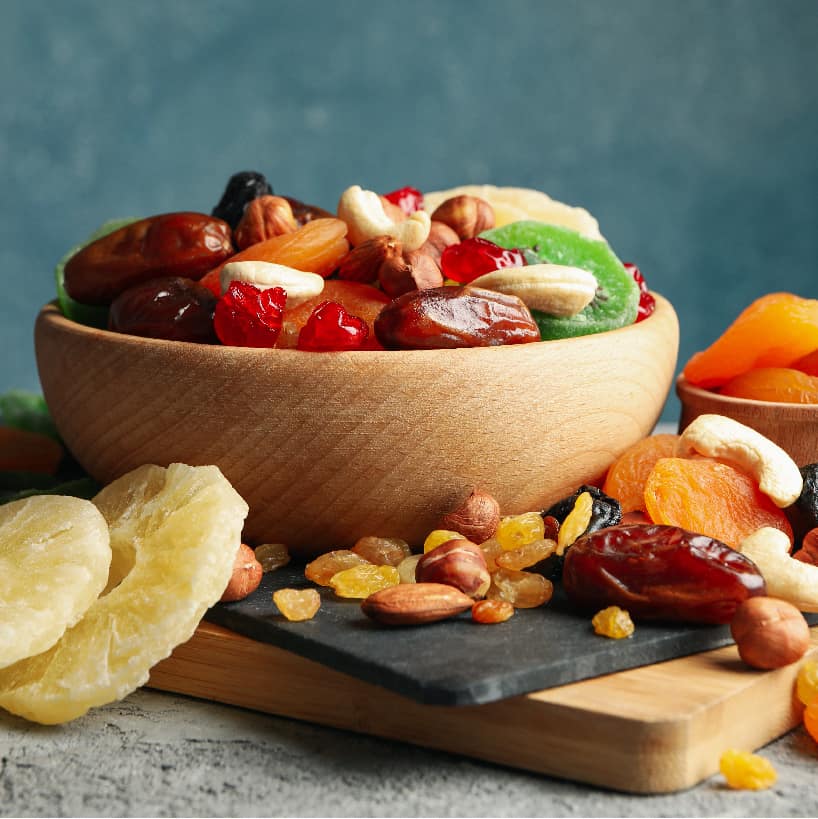This Dr. Axe content is medically reviewed or fact checked to ensure factually accurate information.
With strict editorial sourcing guidelines, we only link to academic research institutions, reputable media sites and, when research is available, medically peer-reviewed studies. Note that the numbers in parentheses (1, 2, etc.) are clickable links to these studies.
The information in our articles is NOT intended to replace a one-on-one relationship with a qualified health care professional and is not intended as medical advice.
This article is based on scientific evidence, written by experts and fact checked by our trained editorial staff. Note that the numbers in parentheses (1, 2, etc.) are clickable links to medically peer-reviewed studies.
Our team includes licensed nutritionists and dietitians, certified health education specialists, as well as certified strength and conditioning specialists, personal trainers and corrective exercise specialists. Our team aims to be not only thorough with its research, but also objective and unbiased.
The information in our articles is NOT intended to replace a one-on-one relationship with a qualified health care professional and is not intended as medical advice.
What Is Kyphosis? 5 Natural Remedies for ‘Dowager’s Hump’
September 5, 2018

Kyphosis, sometimes called a hunchback or dowager’s hump, is a curve in the back that is more extreme than normal. Although it mostly affects older women, it can happen to people of any age. In its mild stage, it causes few problems. Left untreated, however, it can cause serious complications.
Read on to learn about kyphosis, its symptoms and causes, and what you can do to manage symptoms and improve posture.
What Is Kyphosis?
Kyphosis is an exaggerated curve in the back. The back rounds and causes a forward-leaning posture in the head and neck, which can also compress the belly area. In some cases, the bump looks like a hunchback or slouched posture.
In most cases, kyphosis is age-related. Weak spinal bones crack or compress, changing the spine from being like a stack of blocks to a stack of wedges, causing the curve to develop.
Kyphosis diagnosis requires a health care professional to confirm the spine’s curve. They will also check for neurological changes such as paralysis, weakness or other changes in sensation below the spine’s curve. Tests may include X-rays, pulmonary function tests, an MRI and a bone density test to check for osteoporosis.
Thoracic kyphosis involves a curve of the spine primarily in the upper spine (the thoracic region). This can produce the typical hunchback appearance. Cervical kyphosis is basically curving or kyphosis of the neck.
Signs and Symptoms
Signs of kyphosis primarily include the rounded appearance of the back. Kyphosis symptoms may also include:
- Fatigue
- Back pain, especially in the middle or lower back
- Tender or stiff spine
- Difficulty or pain with certain activities, such as getting out of a seated position, looking upward, driving or lying down
- Digestive issues, including acid reflux or difficulty going to the bathroom
- Trouble breathing or chest pain (in advanced cases)
Causes and Risk Factors
Kyphosis causes can include anything that makes the spinal bones (called vertebrae) curve, usually because they weaken into a wedge shape.
Causes of these problems with the spine bones include: (1, 2, 3)
- Scheuermann’s disease, also called Scheuermann’s kyphosis — this develops in kids, usually boys, during growth spurts before puberty
- Osteoporosis or weak bones that lead to compression fractures
- Injury or fractures to the spine
- Degenerative diseases that affect the spine, including arthritis and disc degeneration
- Slipped vertebrae (called spondylolisthesis)
- Some hormone (endocrine) disorders
- Muscle disorders, such as muscular dystrophy or cerebral palsy
- Scoliosis, which causes the spine to curve in a C or S shape
- Spina bifida, a birth defect that affects the backbone and spinal canal
- Tumors or neurofibromatosis
- Spinal infections
- Cancer or its treatments, which can weaken the backbone
- Rare disorders such as Ehlers-Danlos syndrome or Marfan syndrome
- Bad posture, which can cause postural kyphosis — this is most common in adolescents, due to bad slouching that leads to weak muscles and a curved spine
- Malnutrition, especially vitamin D and calcium deficiencies, that can lead to osteoporosis or other bone conditions
- Medical intervention, such as spine surgery
Conventional Treatment
Kyphosis treatment depends on the condition’s cause. In some cases, no medical treatment is required. Kyphosis exercises or physical therapy may be offered to strengthen the back muscles and prevent slouching — especially for postural kyphosis or Scheuermann’s disease. For severe cases or cases caused by degenerative or congenital problems, kyphosis treatments may include:
- Pain relievers such as acetaminophen, ibuprofen or naproxen sodium. Prescription pain relief may be offered in severe cases.
- A combination of bracing and physical therapy. This can help correct posture and prevent more serious curves, particularly in young people with Scheuermann’s disease.
- Osteoporosis treatments, such as medication and dietary changes. This can help strengthen bones and prevent bone fractures that can make kyphosis symptoms worse.
- Surgery, particularly for cases causing significant pain or such a big curve that it creates problems with breathing or movement. Spinal fusion may help reduce the amount of spinal curve and reduce pinched nerves.
- Medication or surgery to treat tumors or infection that have lead to kyphosis.

5 Natural Remedies for Kyphosis Symptoms
In many cases, kyphosis does not need medical treatment. Cases that do require treatment often respond well to natural remedies, such as physical therapy, which can improve posture and relieve pain.
Consider these natural approaches for relieving some kyphosis-related symptoms, especially if you have osteoporosis-related kyphosis, postural kyphosis or Scheuermann’s kyphosis:
1. Eat a diet rich in bone-strengthening nutrients
Bone weakness contributes to many cases of kyphosis. By eating a diet that supports your bone strength, you can prevent or treat osteoporosis and osteopenia as well as reduce the chance of continued spinal compression fractures that can make kyphosis worse.
A diet to support bone health includes: (4)
- Foods with calcium, such as:
- Dairy products
- Leafy greens
- Nuts
- Seaweed
- Bone marrow
- Foods with vitamin D, such as:
- Fatty fish, such as salmon
- Liver meats
- Eggs
- Butter
- Foods with magnesium, such as:
- Leafy greens
- Wild or brown rice
- Nuts
- Beans
- Flax
- Avocados
- Squash
- Foods with vitamin K, such as:
- Leafy greens
- Green tea
- Hard cheese
- Fermented foods
- Vegetables
- Foods with zinc, such as:
- Oysters
- Liver meats
- Crab
- Wheat germ
- Foods with manganese, such as:
- Whole grains, like brown rice and buckwheat
- Leafy greens
- Molasses
- Foods with boron, such as:
- Almonds
- Beans and legumes
- Raisins and prunes
- Chickpeas
- You can also follow an osteoporosis diet, which is rich in the above nutrients and emphasizes low-fat dairy, high quality protein, lots of green leafy vegetables and foods that fight inflammation.
2. Avoid bone enemies
There are some things you can eat, drink or do that weaken your bones. Avoid them to slow bone loss or even help your body recover its nutrient stores in your bones. (5, 6)
- Smoking may decrease bone density. Quit smoking or using other tobacco products. Research indicates that smokers are more likely to develop osteoporosis and to have fractures. They also heal bone more slowly after a fracture.
- Excessive alcohol use keeps your body from building healthy bones. Not only does too much alcohol upset the balance of calcium in your body, it can also interfere with hormones and vitamins that help you build strong bones.
- Physical inactivity puts you at higher risk for weak bones. People who don’t exercise are more likely to have osteoporosis and weak bones. Avoid too much rest and improve your bone health by getting regular exercise. With time, it can help your body build stronger bones.
- Soft drinks may lead to soft bones. There is some connection between cola (not lemon lime and ginger sodas) and weak bones. Although the exact cause isn’t clear, it’s easy to swap out cola for another drink, or limit your consumption, to avoid a possible weakening impact on your bones.
- Coffee may be another bone-weakener. Just as with colas, the connection between coffee and weaker bones isn’t crystal clear, but it may help to limit or avoid your intake, especially if you drink these drinks instead of calcium-rich drinks such as milk. Caffeinated teas do not have the same connection to bone health.
3. Consider supplements
People with weak bones and kyphosis-related pain may benefit from some supplements to naturally support bone and muscle health, reduce inflammation and ease pain.
However, some supplements can interact with medications or have side effects. Do not start taking a supplement without first talking with your kyphosis health care provider. Consider asking whether these supplements may be appropriate for you: (4, 7, 8)
- Calcium and vitamin D. Many people have trouble getting enough of these nutrients through diet alone. You may be told to take around 800–1,200 milligrams of calcium and 800–2,000 IU or higher of vitamin D per day. Calcium is essential for bone development and strength, and vitamin D helps your body absorb calcium.
- Magnesium. This helps your body absorb calcium and make hormones that keep bones healthy. You may be told to take 400–800 milligrams per day.
- Vitamin K1 and vitamin K2. These help your body make osteocalcin, which builds the bone structure and tissue and helps the calcium stick to your bone structure. You may be told to take up to 1,000 micrograms of vitamin K1 and about 45–180 micrograms of vitamin K2.
- Zinc. This helps your bones heal and make collagen, which is used to build bones. You may need 12–30 milligrams of zinc per day.
- Manganese. This helps the body build collagen and bone cartilage. It also helps the bones hold onto important minerals. You may need up to 10 milligrams as a supplement.
- Boron. This helps you metabolize calcium, vitamin D and magnesium. You may need up to 5 milligrams.
- Creatine. This helps provide energy for your muscles and can help you build muscle and gain strength.
- Protein. If you struggle to get enough protein in your diet, a protein powder supplement may help. There are vegan and whey or casein-based options as well as others. These may be useful if you exercise a lot or do not eat much dietary protein.
- Beta-alanine. This amino acid may help fight muscle fatigue and make it easier to perform. It may also help you build muscle if you exercise. You may be told to take up to 4 grams per day, depending on your level of activity and weight.
- SAM-e (S-adenosylmethionine). This supplement may help relieve pain and fight inflammation. It may also support cartilage growth. It is a popular choice for people with osteoarthritis and bone-related pain.
- Boswellia Serrate (Indian frankincense). This may help fight inflammation and pain. It may also slow cartilage loss when used consistently.
- Turmeric or curcumin. This also fights both pain and swelling and may offer benefits for the long-term with consistent use.
- Fish oil. Omega-3 fatty acids are now well known for their ability to fight inflammation. They can also relieve tenderness and stiffness in some people and may help fight pain.
4. Exercise and do physical therapy
Exercise is just as helpful for your bones as it is for your muscles. In addition, strengthening the muscles in your back can help improve your posture. Both exercise and physical therapy can also reduce kyphosis-related slouching and pain. Although these are most helpful for people with postural kyphosis or Scheuermann’s disease, they may also be helpful for others. Kyphosis exercises include: (9, 10)
- Posture reversal or “mirror image” motions. Slowly reverse the posture you are trying to avoid. Lift your head tall and drop your shoulders back and down. Tuck your chin slightly so your head is straight in line with your shoulders and back. Hold the position for 30 to 60 seconds, but stop if you feel pain. It may help to stand with your back against a wall when you do this exercise.
- Cobra pose. This popular yoga position can build strong back muscles to help prevent slouching. Lie on your stomach with your legs stretched out behind you. Put your palms flat on the floor near your ribs or shoulders. Rest the tops of your feet on the floor. When you exhale, use your ab and back muscles only (not your arms or hands) to slowly straighten your spine and lift your head and chest off the floor. Keep your hips pressed into the floor and look down to keep your neck relaxed. Then slowly lower back down. Repeat at least three times, or more if you can.
- Plank pose. This yoga move strengthens your shoulders and back as well as your abs, making it easier to hold your spine straight. Get on your hands and knees. Line up your palms straight under your shoulders. Slowly extend both legs out behind you so that you support your weight on your toes and your palms, just as if you are at the top of a pushup. Use your back and ab muscles to keep your back from buckling in or sagging. Look down at the floor and hold the pose until you feel too tired. Repeat a few times as you are able.
- Chin tuck. Lie on your back on the floor with your arms down by your sides and your legs bent. Tuck your chin down and back to try to make a double chin. Hold it for 15 seconds if you can and repeat up to 10 times.
- Superman pose. Lie on your stomach on the floor with your hands stretched out above your head and your legs extended back. Keep your head neutral and lift your arms and legs up toward the ceiling. Try to reach opposite directions with your hands and feet. Hold for a few seconds and slowly lower your limbs to rest. Repeat up to 10 times if you can.
- Y-stretch. Stand straight with your chest up, shoulders down and back, and your core tight. Keep your knees relaxed. Slowly lift your arms overhead into a Y position. Point your thumbs behind you. Take a few deep breaths and focus on keeping the posture strong. Then relax and lower your arms. Repeat several times if you can.
- Weight-bearing exercises. Walking, climbing steps, lifting weights and other weight-bearing activities can help strengthen your bones and improve back and muscle strength.
Physical therapy options for kyphosis depend on the type of kyphosis you have. Exercises may include walking, tennis, weightlifting or other activities you enjoy, as well as stretches and moves designed to treat your specific needs.
People with postural kyphosis will likely get physical therapy focused on re-adjusting to proper posture. Chiropractic adjustments can also help address these posture issues and restore spinal joint motion. (11a)
Those with Scheuermann’s kyphosis may get muscle training to improve strength, flexibility, and range of motion and to loosen or relax tight muscles in the legs. People with spinal fracture-related kyphosis may be given therapy to strengthen muscles near the spine to prevent future fractures. This can take some pressure off the backbone and ease pain. (11b)
5. Get ergonomic
Not everyone with kyphosis has it because of poor posture. However, almost everyone with kyphosis can benefit from proper posture and accommodations to make it easier to sit and do activities with good spine support. Bad posture can aggravate kyphosis caused by other problems as well. Some kyphosis-specific tips for ergonomics include: (12)
- Try out multiple options. Not everything labeled “ergonomic” will be comfortable or helpful.
- Ergonomic items don’t excuse you from all effort for good posture. Instead, they are made to support and enhance good posture. You still need to use them properly and make sure they are adjusted for your height and how you will use them.
- Keep your feet flat on the floor without crossing your legs. This helps you support your body weight and makes it easier to avoid slouching.
- Don’t sit at a 90-degree angle. Instead, you should recline slightly. The chair should have an angle tilted to 100 to 110 degrees.
- Support your lower back. Lumbar support makes it easier to straighten your spine and hold it in the right position higher up.
- Take breaks. Get up and move around fairly frequently to stretch your muscles.
- Keep screens straight in front of you. Keep them at eye level so you don’t have to crane your neck, lean forward or turn your head to see.
- If you use a keyboard, adjust it so it tilts down and away a little. Your hands shouldn’t be higher than your elbows. This helps keep your wrists and arms in a more comfortable posture.
How to Prevent Kyphosis
Kyphosis due to weak bones can usually be prevented in older adults by treating or preventing osteoporosis. In most cases, osteoporosis can be prevented by staying active and getting plenty of vitamin D and calcium.
Postural kyphosis can be prevented with proper posture and exercise to strengthen muscles that support the spine, neck and shoulders.
For cases that are caused by malformed spines or inherited diseases, there is no way to prevent the condition. However, early treatment can prevent the worst symptoms. Mild cases may respond to simple dietary treatments, osteoporosis treatment and physical therapy. However, depending on the cause, kyphosis sometimes requires bracing or surgery to prevent serious complications.
Precautions
- Do not attempt to self-diagnose kyphosis. There are a number of back problems that may be confused with the condition that have different treatments.
- Do not attempt to treat kyphosis without the guidance of a health care professional. Without proper treatment, some types of kyphosis can create trouble breathing, severe back pain, permanent disfigurement and problems with the heart or nervous system, including weakness or paralysis.
- Do not take herbs or supplements without first consulting a physician or pharmacist, as many natural remedies can interact with prescription medications or cause side effects.
Kyphosis Key Points
- Kyphosis is a curve in the spine that makes the back look rounded, often causing the appearance of someone leaning forward. It is also called hunchback or dowager’s hump.
- In most cases, kyphosis is caused by osteoporosis in older adults. In younger adults, poor posture or Scheuermann’s disease is often to blame.
- Symptoms include the hunched back, which looks like a slouch. The condition can also cause back pain, muscle weakness or fatigue, and in serious cases, difficulty breathing, digesting or feeling sensation in the legs.
- Most kyphosis has a good prognosis, especially if treated early. Many people may need no treatment at all, while others may be fine with just exercise and physical therapy. Others may require pain medications or surgery to correct the spinal deformity, relieve pain and avoid serious complications with breathing and the nervous system.
5 Natural Remedies to Help Improve Kyphosis
- Eating a diet to support bone health, which includes leafy greens and other foods high in vitamins and minerals
- Avoiding bone enemies such as smoking, alcohol, cola and coffee
- Considering supplements such as calcium and vitamin D, magnesium, zinc, vitamin K, and omega-3 fatty acids
- Exercising, such as certain yoga poses, walking and weightlifting, and doing physical therapy
- Getting ergonomic help to improve your posture












